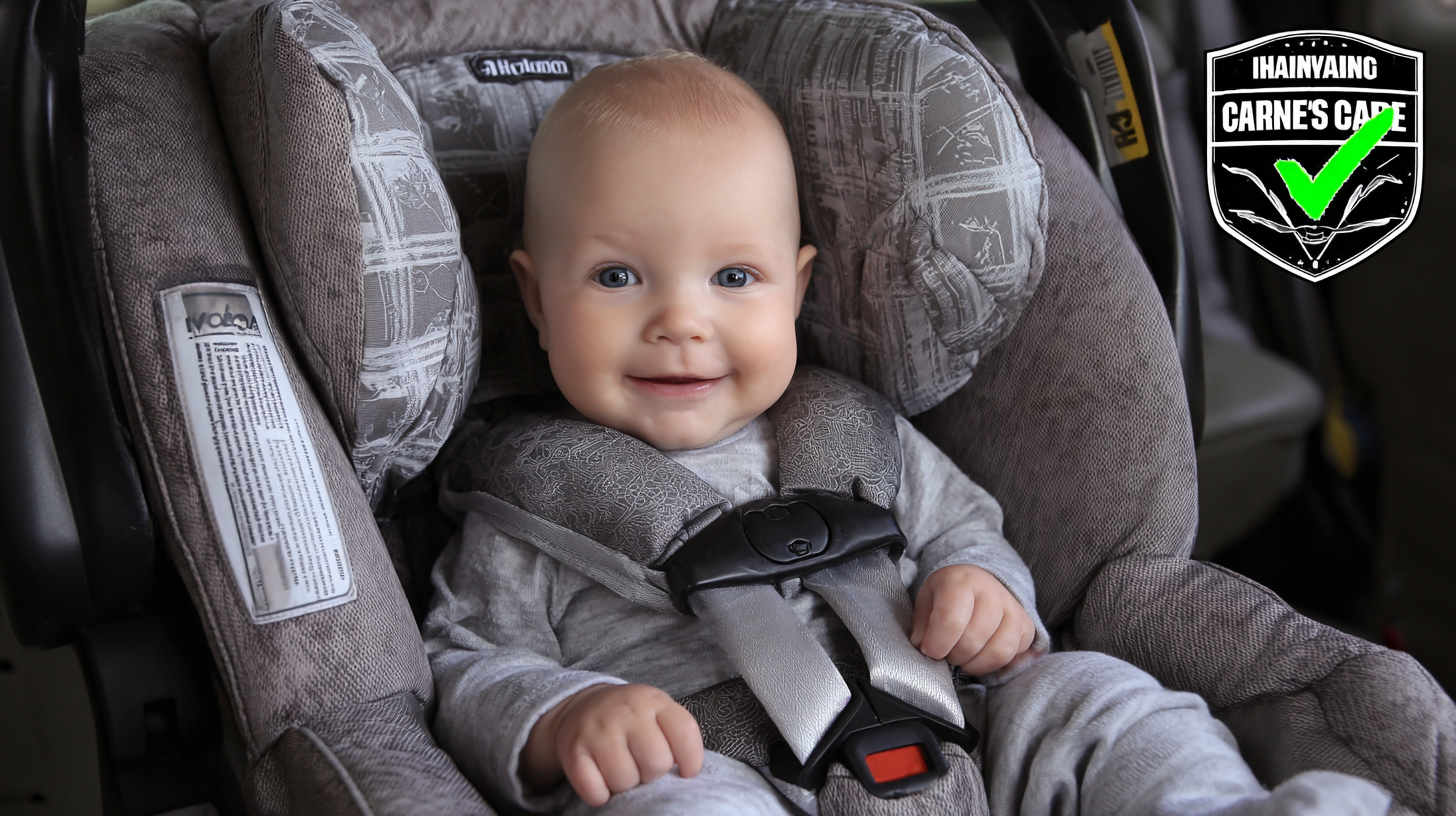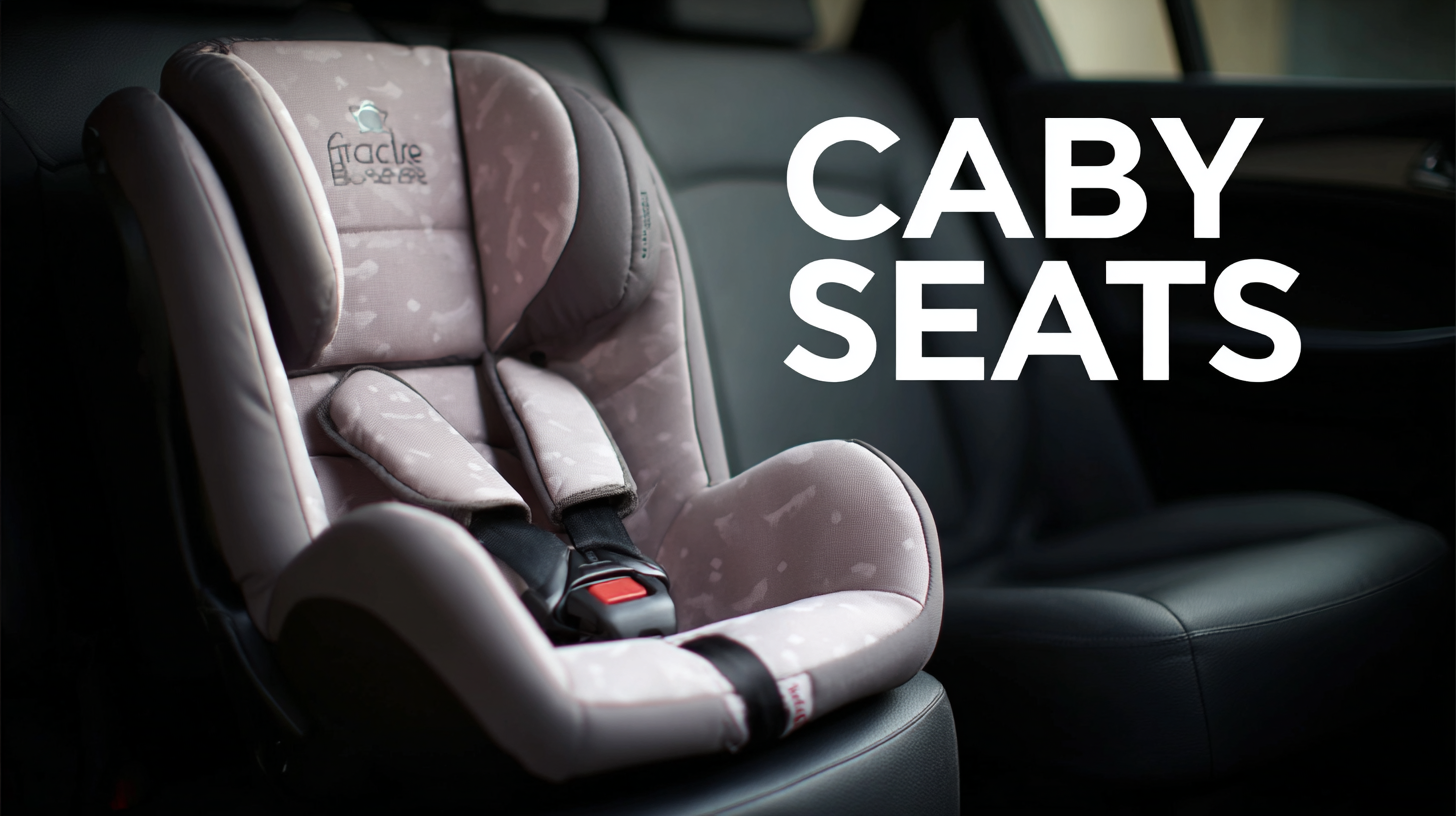When it comes to ensuring the safety of our little ones during travel, the importance of choosing the right Baby Car Seats cannot be overstated. According to the NHTSA, car crashes are a leading cause of injury and death for children under 13 years old, making proper car seat use crucial. In fact, the NHTSA estimates that properly used car seats can reduce the risk of fatal injury by 71% for infants and 54% for toddlers in passenger cars. However, many parents struggle with identifying the best Baby Car Seats due to common issues such as installation difficulties and compatibility with vehicle systems. This blog aims to explore these challenges and provide insights into the technical specifications of top-rated baby car seats available on the market, ensuring families can make informed choices for safer journeys with their children.

When selecting the best baby car seats, safety features should be your top priority.
One of the key features to look for is the five-point harness system.
This design secures your child at the shoulders, hips, and between the legs, distributing crash forces across the strongest parts of their body.
It’s essential to ensure that any car seat you consider has undergone rigorous testing to meet safety standards set by organizations such as the
National Highway Traffic Safety Administration (NHTSA).
Another crucial aspect is the side-impact protection that many modern car seats offer.
This feature includes energy-absorbing padding and structural reinforcements that shield your child in the event of a side collision.
When examining options, don’t forget to check for a seat with adjustable headrests or side wings, as these can enhance protection as your child grows.
Finally, the ease of installation is often overlooked but is vital for ensuring safety.
Look for car seats equipped with LATCH (Lower Anchors and Tethers for Children) systems,
which simplify the installation process and reduce the risk of user error. Always follow the manufacturer's guidelines and consider practicing installation before bringing your new car seat home.
When it comes to ensuring the safety of our little ones during travel, selecting the best baby car seat is crucial. However, even the most well-reviewed models often come with their own set of common issues. One of the most frequently reported problems is improper installation. Many parents find it challenging to secure the car seat correctly, leading to inadequate protection in the event of an accident. Some models feature complex installation instructions that can overwhelm new users, emphasizing the need for clear guidance and user-friendly designs.
Another recurring issue involves the convenience of use. Parents often express frustration over features such as the car seat's weight, making it cumbersome to carry in and out of the vehicle. Additionally, some models struggle with adjustability; as children grow, parents may find it difficult to modify the harness system or recline angle, which are critical for ensuring comfort and safety. By addressing these common concerns, manufacturers can enhance the overall usability of baby car seats, providing peace of mind for parents while keeping their little ones secure during travel.
| Issue | Frequency Reported | Potential Cause | Advice |
|---|---|---|---|
| Difficult Installation | 25% | Complicated instructions or design | Consult online tutorials or professional installation services |
| Poor Harness Adjustment | 18% | Inflexible straps or complex mechanism | Regularly check harness adjustments and run tests for ease of use |
| Insufficient Side Impact Protection | 15% | Design not tested for side impacts | Select seats with higher side impact ratings |
| Incompatibility with Vehicles | 20% | Design mismatches with vehicle models | Check compatibility lists before purchase |
| Difficulty Cleaning | 10% | Non-removable covers | Look for machine-washable covers |
When it comes to selecting the best baby car seat, understanding safety ratings is crucial for ensuring your child’s security during travel. Safety ratings are typically assigned by independent organizations that evaluate various car seat models based on multiple criteria, including crash test performance, ease of use, and installation accuracy. These ratings help parents navigate the often confusing landscape of baby car seats by providing a reliable benchmark for safety.
Additionally, it's important to recognize that not all safety ratings are created equal. Some organizations conduct more rigorous testing and offer detailed reports on their evaluation processes. This means that a car seat with a higher rating from a reputable organization may significantly outperform others in real-world crash situations. Parents should look for seats that not only meet federal safety standards but also achieve high ratings in independent tests, ensuring that they are making an informed choice for their little ones. Keeping these insights in mind will help you choose a car seat that prioritizes safety without compromising on comfort.

When it comes to choosing the right baby car seat for your family’s travel needs, several factors are essential to ensure safety and comfort. According to recent studies, properly installed car seats can reduce the risk of injury by up to 71% compared to using seat belts alone. This underscores the importance of selecting a car seat that suits your child’s age, weight, and height, as well as the type of vehicle you have.
When considering travel systems, which typically include an infant car seat, a base, and a compatible stroller, it’s crucial to ensure that the system is easy to install and use. Look for models that have been tested for safety and ease of use, like those evaluated by leading safety organizations.
Tips for choosing the right car seat include checking for the latest safety ratings, ensuring it fits well in your vehicle, and verifying that it can be easily transferred between the car and stroller. Additionally, always check the manufacturer's guidelines for height and weight limits to ensure your child is within the safe range for the seat you choose.
Maintaining and caring for your baby car seat is crucial for ensuring the safety of your child during travel. Regular inspections should be a part of your routine; checking for any signs of wear and tear, such as frayed straps, cracks in the shell, or loose components, can help identify potential safety issues before they become serious problems. Additionally, ensuring that the car seat is correctly installed according to the manufacturer's guidelines will significantly reduce the risk of injury in the event of an accident.
Cleaning your baby car seat is also essential for both hygiene and safety. Food crumbs and spills can attract bacteria, while a dirty seat can make it difficult to spot crucial structural issues. Most car seats come with removable covers that can be machine-washed, making this process easier. Remember to also clean the harness system gently; it should remain free of any debris that could impact its effectiveness. By staying vigilant and proactive in caring for your baby's car seat, you can provide a safer travel environment for your little one.

TradeManager
Skype
VKontakte

